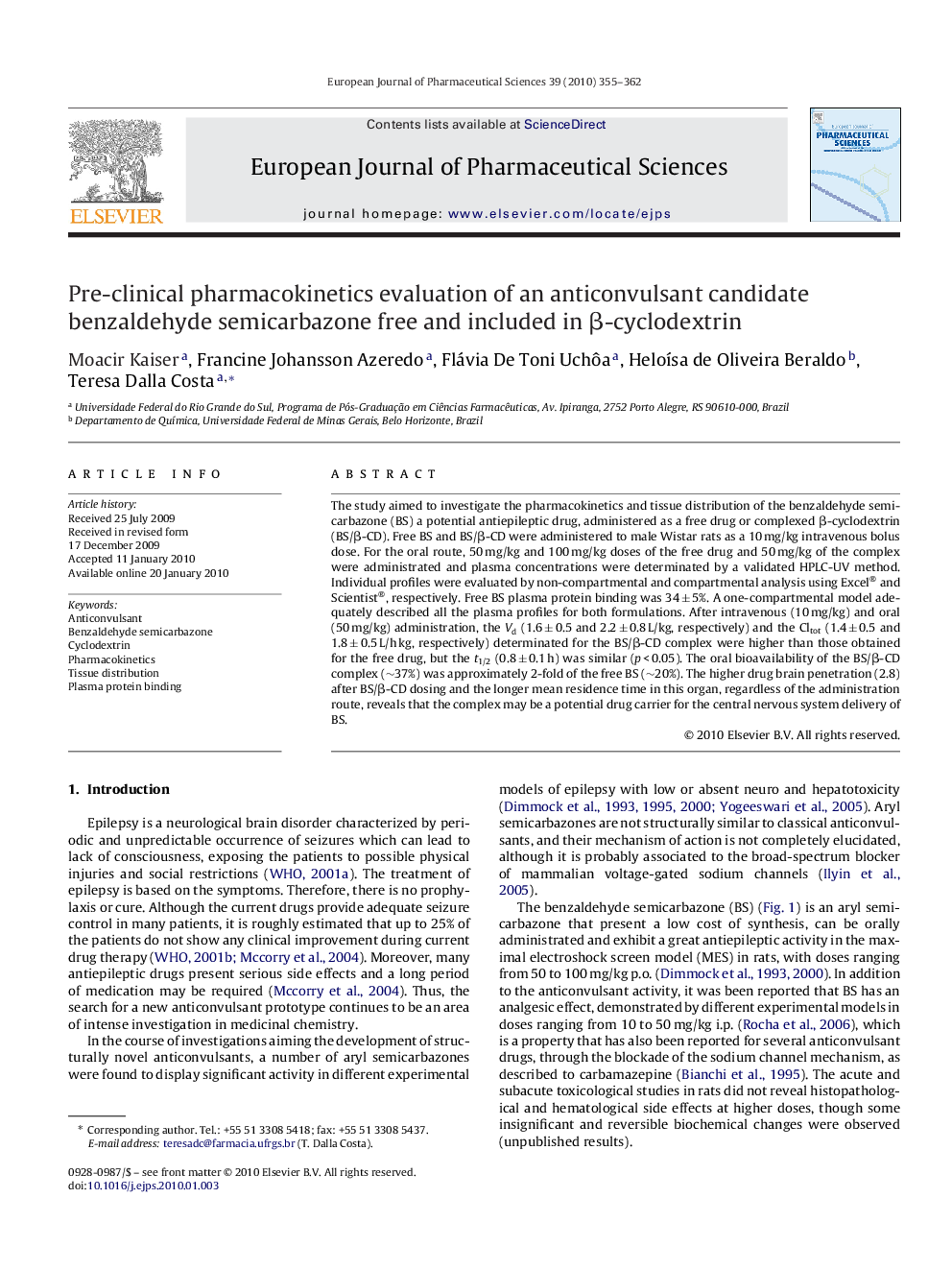| Article ID | Journal | Published Year | Pages | File Type |
|---|---|---|---|---|
| 2481837 | European Journal of Pharmaceutical Sciences | 2010 | 8 Pages |
The study aimed to investigate the pharmacokinetics and tissue distribution of the benzaldehyde semicarbazone (BS) a potential antiepileptic drug, administered as a free drug or complexed β-cyclodextrin (BS/β-CD). Free BS and BS/β-CD were administered to male Wistar rats as a 10 mg/kg intravenous bolus dose. For the oral route, 50 mg/kg and 100 mg/kg doses of the free drug and 50 mg/kg of the complex were administrated and plasma concentrations were determinated by a validated HPLC-UV method. Individual profiles were evaluated by non-compartmental and compartmental analysis using Excel® and Scientist®, respectively. Free BS plasma protein binding was 34 ± 5%. A one-compartmental model adequately described all the plasma profiles for both formulations. After intravenous (10 mg/kg) and oral (50 mg/kg) administration, the Vd (1.6 ± 0.5 and 2.2 ± 0.8 L/kg, respectively) and the Cltot (1.4 ± 0.5 and 1.8 ± 0.5 L/h kg, respectively) determinated for the BS/β-CD complex were higher than those obtained for the free drug, but the t1/2 (0.8 ± 0.1 h) was similar (p < 0.05). The oral bioavailability of the BS/β-CD complex (∼37%) was approximately 2-fold of the free BS (∼20%). The higher drug brain penetration (2.8) after BS/β-CD dosing and the longer mean residence time in this organ, regardless of the administration route, reveals that the complex may be a potential drug carrier for the central nervous system delivery of BS.
